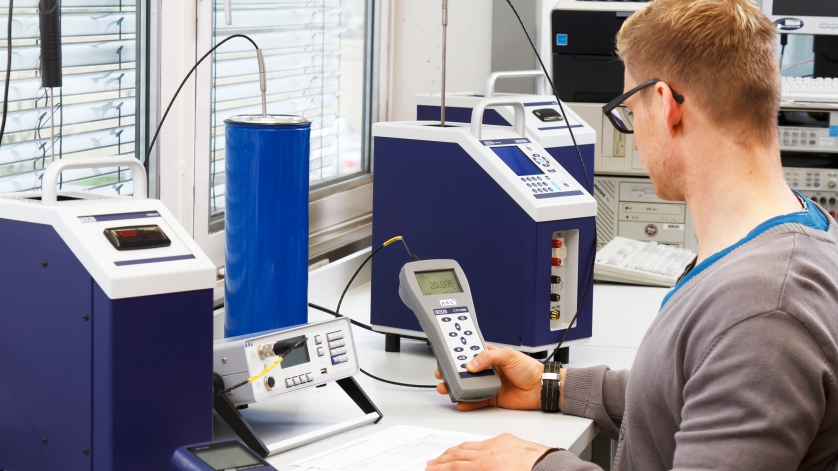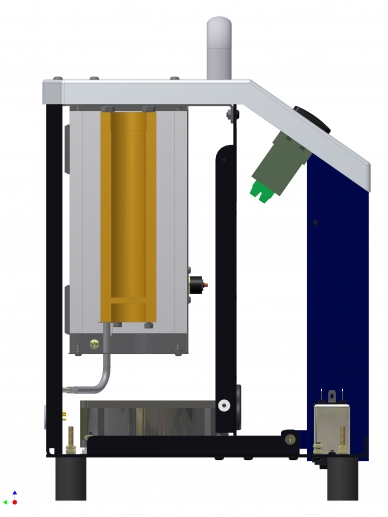
Dry-well calibrators are portable instruments for the simple on-site calibration of temperature measuring instruments. A temperature dry-well calibrator consists of an electrically heated or cooled metal block, an accurate temperature control and an internal reference with indicator for determining the block temperature. In the metal block is a bore for accepting the insert. This exchangeable insert is supplied with one or more bores with individual diameters and serves for the adaption of the test items.
With on-site calibration, the thermometer to be tested can be taken directly out of its thermowell in the plant, without having to interrupt the electrical connections to the evaluation system, and inserted into the appropriate bore of the insert. Here it should generally be ensured that the bore diameter, bearing in mind the thermal expansion of the calibration item, is selected to be as tight as possible, since any air gap between the test item and the insert impairs heat transfer. Therefore, the bore diameter must be a maximum of 0.5 mm greater than the external diameter of the test item.

Structure of a dry-well calibrator
The required temperature with which the test item should be calibrated is regulated with the calibrator. Frequently temperature probes are calibrated at the respective process temperature. Once a thermal equilibrium has been set between the thermometer being tested and the calibrator, the measuring deviation of the test item can be recorded. This corresponds to the temperature difference between its temperature and the reference temperature displayed on the calibrator. The total measurement uncertainty is made up of the accuracy of the calibrator and the short-term stability of the test item. Depending on the temperature range and the properties of the calibration item, calibration is carried out with a measurement uncertainty of 0.1 K to 3 K.
What else should be taken into account?
The minimum immersion depth for dry well calibrators is 70 mm. This is driven by the axial gradient, since warm air rises from the bottom up. Should the minimum immersion depth not be reached, an external reference thermometer must be used for calibration. This is then placed on the same level as the object to be calibrated and the results are compared with each other.
Recommended rule of thumb for the immersion depth of a test item
Diameter of the test item x 15 or for a known sensitive length: sensitive length + diameter of the test item x 10
Note
Further information on our portable temperature calibrators and services can be found on the WIKA website.

